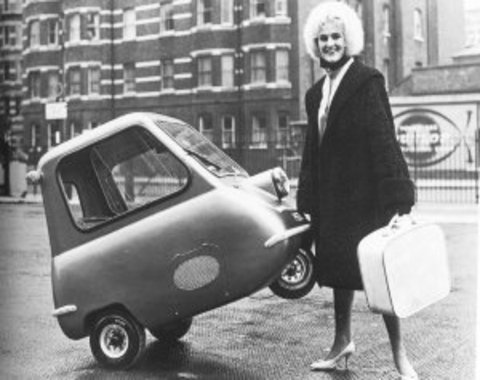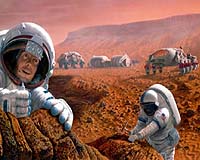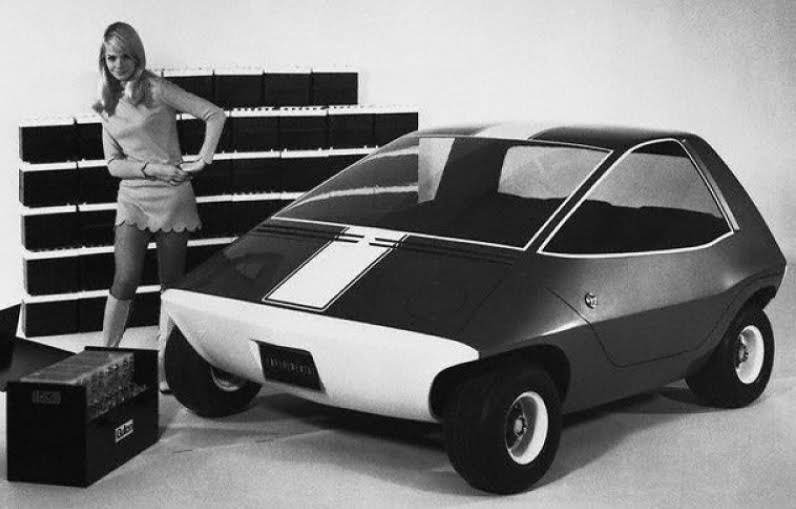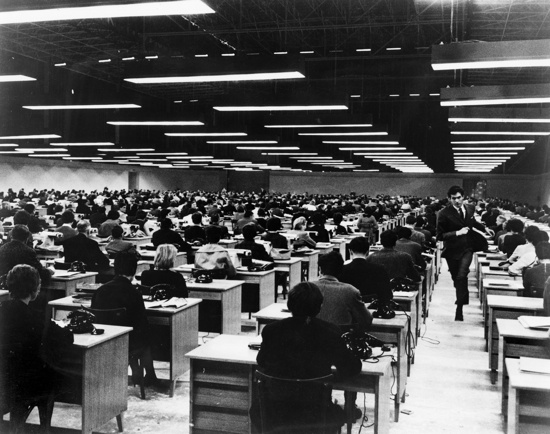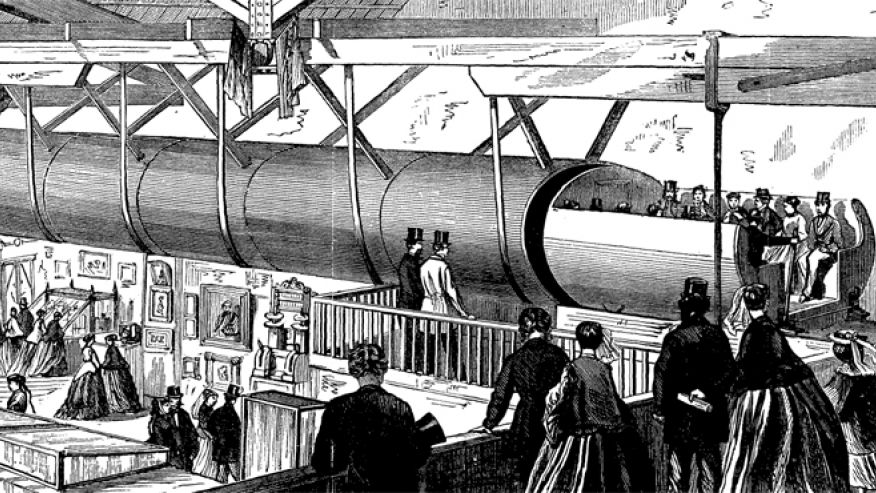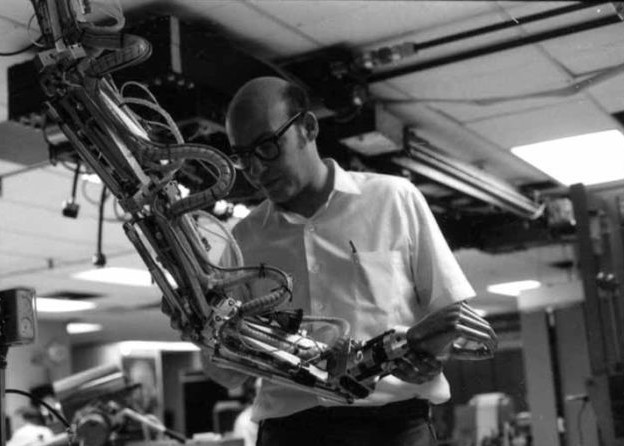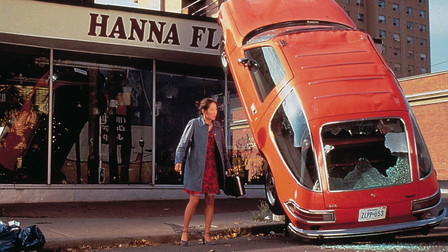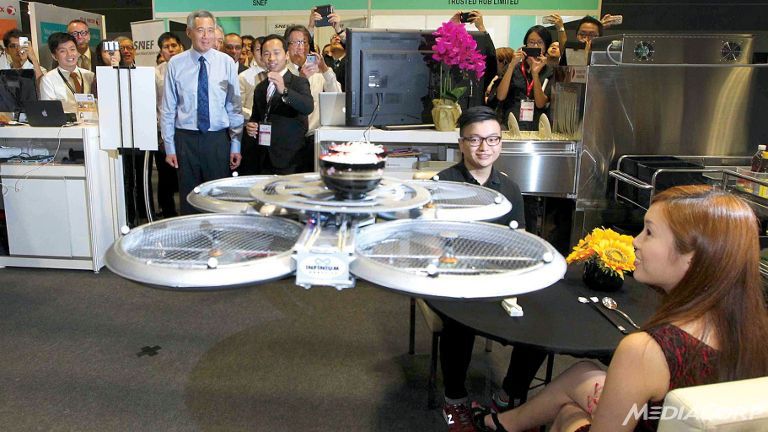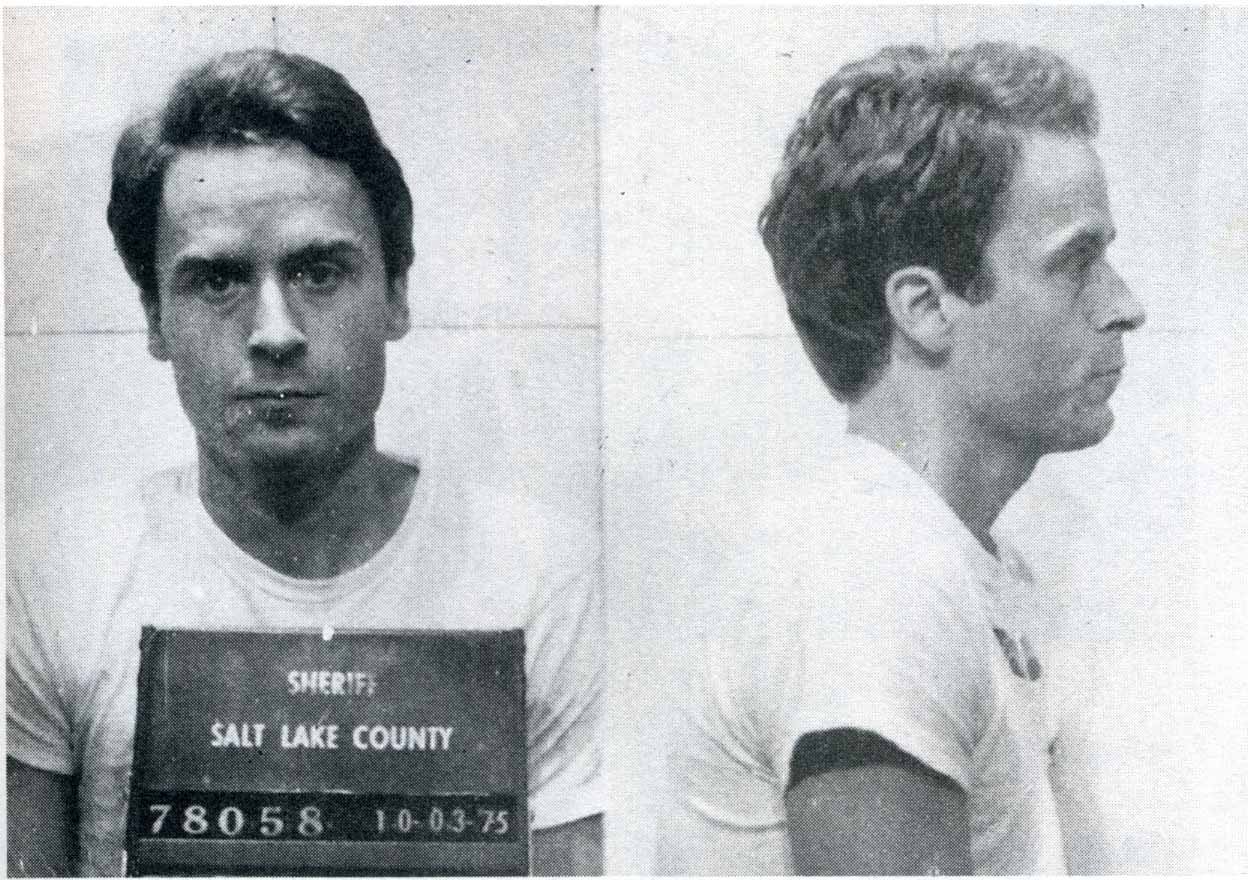Narrated 18-minute newsreel portrait of Iraq in 1953, as the state made a push toward modernization.
You are currently browsing the archive for the Urban Studies category.
Marc Goodman, law-enforcement veteran and author of the forthcoming book Future Crimes, sat for an interview with Jason Dorrier of Singularity Hub about the next wave nefariousness, Internet-enabled and large-scale. A question about the potential for peril writ relatively small with Narrow AI and on a grand scale if we create Artificial General Intelligence. An excerpt::
Question:
Elon Musk, Stephen Hawking, and Bill Gates have expressed concern about artificial general intelligence. It’s a hotly debated topic. Might AI be our “final invention?” It seems even narrow AI in the wrong hands might be problematic.
Marc Goodman:
I would add Marc Goodman to that list. To be clear, I think AI, narrow AI, and the agents around us have tremendous opportunity to be incredibly useful. We’re using AI every day, whether it’s in our GPS devices, in our Netflix recommendations, what we see on our Facebook status updates and streams—all of that is controlled via AI.
With regard to AGI, however, I put myself firmly in the camp of concern.
Historically, whatever the tool has been, people have tried to use it for their own power. Of course, typically, that doesn’t mean that the tool itself is bad. Fire wasn’t bad. It could cook your meals and keep you warm at night. It comes down to how we use it. But AGI is different. The challenge with AGI is that once we create it, it may be out of our hands entirely, and that could certainly make it our “final invention.”
I’ll also point out that there are concerns about narrow AI too.
We’ve seen examples of criminals using narrow AI in some fascinating ways. In one case, a University of Florida student was accused of killing his college roommate for dating his girlfriend. Now, this 18-year-old freshman had a conundrum. What does he do with the dead body before him? Well, he had never murdered anybody before, and he had no idea how to dispose of the body. So, he asked Siri. The answers Siri returned? Mine, swamp, and open field, among others.
So, Siri answered his question. This 18-year-old kid unknowingly used narrow AI as an accomplice after the fact in his homicide. We’ll see many more examples of this moving forward. In the book, I say we’re leaving the world of Bonnie and Clyde and joining the world of Siri and Clyde.•
Tags: Jason Dorrier, Marc Goodman
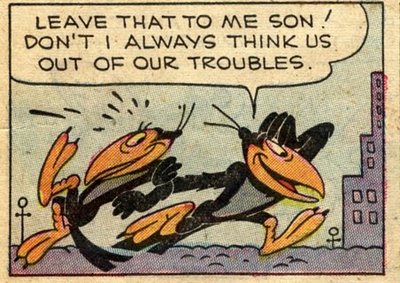 Humans are the worst thing ever for other species, especially megafauna. When we began to appear on continents, they started to largely disappear. Some of it was unavoidable if we were going to settle all over the globe, since we needed to burn through tall grasses and forestry to explore and establish. But plenty of it could be avoided, if we begin to realize that other creatures aren’t merely meat and target practice. E.O. Wilson has suggested the “Half-Earth Cure,” but first hearts and minds will have to be won. From Peter Aldhous’ Buzzfeed article “People Are Animals, Too“:
Humans are the worst thing ever for other species, especially megafauna. When we began to appear on continents, they started to largely disappear. Some of it was unavoidable if we were going to settle all over the globe, since we needed to burn through tall grasses and forestry to explore and establish. But plenty of it could be avoided, if we begin to realize that other creatures aren’t merely meat and target practice. E.O. Wilson has suggested the “Half-Earth Cure,” but first hearts and minds will have to be won. From Peter Aldhous’ Buzzfeed article “People Are Animals, Too“:
Tommy the chimpanzee got his day in court on Oct. 8, 2014. He was unable to attend the hearing in “person” — spending the day, like any other, in a cage at a used trailer sales lot in Gloversville, New York. But an hour’s drive away, in a courtroom in the state capital of Albany, Steven Wise of the Nonhuman Rights Project argued that Tommy should indeed be considered a person under New York state law. If so, Patrick and Diane Lavery of Circle L Trailer Sales could be summoned to determine whether they are imprisoning him illegally.
Central to Wise’s arguments in Tommy’s case, and to similar suits his organization has filed on behalf of other captive chimpanzees, is the assertion that apes are highly intelligent and self-aware beings with complex emotional lives. “The uncontroverted facts demonstrate that chimpanzees possess the autonomy and self-determination that are supreme common law values,” Wise told the five judges hearing the case.
It is a bold legal move — and so far unsuccessful. The court in Albany, like a lower court before it, rejected the idea that Tommy has legal rights of personhood. But Wise intends to fight on, taking Tommy’s case to the state’s ultimate arbiter, the New York Court of Appeals.
Events elsewhere in New York state stand in stark contrast to its courts’ willingness to consider the legal implications of the science of animal cognition. In March 2014, the Rip Van Winkle Rod and Gun Club in Palenville, a hamlet of some 1,000 people on the Hudson River, held the fourth installment of an annual festival that makes a competitive sport out of shooting down creatures that — judged by objective measures of their mental abilities — are arguably just as deserving of personhood as Tommy.
Those creatures are crows, targeted with abandon at the Palenville Crow Down. In recent years, members of the corvid family — including crows, ravens, jays and magpies — have been found to possess cognitive skills once thought to be the exclusive domain of people and the great apes. They make and use tools. They remember details about the past and plan for the future. They even seem to respond to one another’s knowledge and desires. “For all the studies that have been compared directly so far, the corvids seem to perform as well as the chimpanzees,” says Nicky Clayton of the University of Cambridge, in whose lab some of the most exciting discoveries have been made.
We gaze into the eyes of a chimp and see a reflection of ourselves. We glance at a crow and see an alien being that under some jurisdictions can be exterminated with impunity — bringing a sinister second meaning to the phrase “a murder of crows.” Such biases affect ordinary people and academic experts alike, skewing our understanding of what nonhuman intelligence looks like.•
From the March 17, 1899 Brooklyn Daily Eagle:
Toronto, Ont. — Four days ago David Custman, aged 21 years, began bleeding at the nose. Remedies were applied without effect, and Custman died this morning. Before death blood oozed from every pore in his body.•
Tags: David Custman
In a Hollywood Reporter piece about the former pride of the peacock, Michael Wolff states the obvious–network news organizations are of little or no consequence apart from in some odd phantom sense–but he makes the case really well. An excerpt:
Maintaining the evening news was perhaps more useful for the corporate agenda than it was as a programming tool or journalistic function. Indeed, despite its 8 million or so nightly viewers and an estimated $200 million in annual ad revenue, Nightly News long has run against the currents of news programming and become quite an organizational sore thumb — a phantom power base that commanded a strange primacy in the corporate bureaucracy. Williams, mostly irrelevant to the overall NBCUniversal bottom line or to the news itself, was yet very powerful.
Each of the networks has, over the past decade or more, made tentative efforts toward disbanding the evening news or combining it with cable operations, or, in many variations of this deal discussion, partnering with CNN. In effect, everybody recognized that the nature of newsgathering had profoundly changed and that networks could not compete (or had no interest in competing) as all-purpose news organizations. But in the end, nobody wanted to take the PR hit for killing the news, or lose the PR advantage in having it.
Until Williams, once the ultimate PR asset, became the ultimate PR nightmare.•
Tags: Brian Williams, Michael Wolff
Figuring out the final 5% of the autonomous-vehicle question will likely be more challenging than getting to that point, but there’s now a critical mass of technologists working on the remaining issues. From Hal Hodson at New Scientist:
SOME day soon, driverless podcars will cluster around our cities, waiting to pick us up on demand. There will be no steering wheel, no brake pedal; once seated, you can take a nap or watch a movie. This public facility will reduce traffic and carbon emissions. Not having to own a car will make transport cheaper for everyone.
Stop us if you’ve heard this one before.
Why are self-driving cars taking so long to show? For starters, essential technological and social changes needed to make them work might still be decades away. But they are on their way, thanks to some of the world’s largest companies. Google has been fine-tuning its autonomous cars for years, amassing hundreds of thousands of kilometres of test drives on Nevada’s roads. Last week the developers of the taxi app Uber announced a collaboration with Carnegie Mellon University’s Robotics Institute to develop technology for a self-driving taxi fleet.
“It’s a very big deal,” says Nidhi Kalra, an analyst at the RAND Corporation. “Nearly every auto-maker is pursuing this technology.”
Autonomous cars will confront the same problem that faces all robots designed to operate around people: social interactions are a key part of negotiating our world.•
Tags: Hal Hodson, Nidhi Kalra
If someone currently alive was to become a trillionaire, it’s probably as likely it would be Elon Musk as anyone. But the idea that the SpaceX founder will have established a city of 80,000 Earth immigrants on Mars within the next 25 years? I’d bet against that one. Brian Wang of the New Big Future thinks both outcomes are plausible. An excerpt:
Mars Colonial Transporter has been notionally described as being a large interplanetary spacecraft capable of taking 100 people at a time to Mars, although early flights are expected to carry fewer people and more equipment. The spacecraft has been notionally described as using a large water store to help shield occupants from space radiation and to possibly having a cabin oxygen content that is up to two times that which is found in Earth’s atmosphere.
The Mars colony envisioned by Musk would start small, notionally an initial group of fewer than ten people. With time, Musk sees that such an outpost could grow into something much larger and become self-sustaining, perhaps up to as large as 80,000 people once it is established. Musk has stated that as aspirational price goal for such a trip might be on the order of US$500,000, something that “most people in advanced countries, in their mid-forties or something like that, could put together [to make the trip].”
Before any people are transported to Mars, a number of cargo missions would be undertaken first in order to transport the requisite equipment, habitats and supplies. Equipment that would accompany the early groups would include “machines to produce fertilizer, methane and oxygen from Mars’ atmospheric nitrogen and carbon dioxide and the planet’s subsurface water ice” as well as construction materials to build transparent domes for crop growth.•
Tags: Brian Wang, Elon Musk
Looking to sell Drama screenplays (New York)
Looking to sell the following un-produced screenplays ($1 million each).
Please let me know if you are interested.
THE PINK SHOW (SOUQUITOUR) – SARA GANES is a stand up comic about to get her shot at her own talk show if she can survive her mother’s loving attacks for 3 more days. Her mother is a vicious past life rival who has destroyed her, life after life. 93 pages. WGAw_1112025
BLOND BOY AND THE PSYCHICS – Psychics convince FBI’s Gaucho Kruger that a child they call “blond boy” will kill many important people. Their tips drag Gaucho through ridicule but he finally captures the mother, a disenchanted former CIA operative. 94 pages. WGAw_1129814
THE PROSTITUTES — All goes awry for former child prostitutes bent on freeing as many brothel children as possible with blackmail proceeds when a radical youth convinces their leader to go after the army. When the dirt settles, most are dead but they prevail. 90 pages. WGAw_1129815
GOLDEN EGG GOOSE (ATLANTIDE) – Refugees from planet Atlantide fight to find a baby lost 18 years ago. She is now a lonely woman struggling with her ability to make wishes come true. 102 pages. WGAw_1129816 (keyword: extraterestrial)
THE BELOVED (THE SHEIK) – Former CIA operative UMBERTO POTTI abandoned his wife precisely to protect her from his work only to have her become a target when he kidnaps the Sheik of a Parisian mosque. 99 pages. WGA #1030163
(Copyrighted material. Worldwide rights reserved.)
Trying to predict weather with precision is a fool’s errand, and even overall trends are tricky. In a new study published at Science Advances, scholars forecast decades-long drought for the American Southwest, beginning later this century. If it were to occur, the stress on humans, infrastructure and finances would be extreme. This, not Al-Qaeda, is a huge threat to us. From Suzanne Goldenberg at the Guardian:
The years since 2000 give only a small indication of the punishment ahead. In parts of Arizona, California, Nevada, New Mexico, Oklahoma and Texas, 11 of those years have been drought years.
As many as 64 million people were affected by those droughts, according to Nasa projections.
Those conditions have produced lasting consequences. In California, now undergoing its fourth year of drought – and the worst dry spell in 1,200 years, farmers have sold off herds. Growers have abandoned fields. Cities have imposed water rationing.
But future droughts could be even more disruptive, because they will likely drag on for decades, not years.
“We haven’t seen this kind of prolonged drought even certainly in modern US history,” Smerdon said. “What this study has shown is the likelihood that multi-decadal events comprising year after year after year of extreme dry events could be something in our future.”•
Tags: Suzanne Goldenberg
Unintended consequences aren’t necessarily a bad thing. The new batteries manufactured for EVs are beginning to be repurposed to power homes. If a good deal of that electricity can be created from solar, a major correction to environmental damage could be in the offing. From Ben Popper at the Verge:
Tesla didn’t ship nearly as many cars this quarter as it had projected, but CEO Elon Musk remained upbeat during today’s earnings call as he let some details slip about a brand new product. According to Musk, the company is working on a consumer battery pack for the home. Design of the battery is apparently complete, and production could begin in six months. Tesla is still deciding on a date for unveiling the new unit, but Musk said he was pleased with the result, calling the pack “really great” and voicing his excitement for the project.
What would a Tesla home battery look like? The Toyota Mirai, which uses a hydrogen fuel cell, gives owners the option to remove the battery and use it to supply electrical power to their homes. That battery can reportedly power the average home for a week when fully charged. Employees at many big Silicon Valley tech companies already enjoy free charging stations at their office parking lot. Now imagine if they could use that juice to eliminate their home electric bill.•
Tags: Ben Popper, Elon Musk
As Reality TV is the modern freak show, the anomalies now hurt psyches rather than hunched backs, the Twitter evisceration of the lunkheaded is the contemporary auto-de-fé, the collective sacrifice of a few to atone for all of our sins. It’s not that the racist and sexist and generally offensive tweets are being sent out by angels who deserve employment security despite their public stupidity, but the crowd condemnation that is supposedly righteousness may actually reveal some wrongheadedness, our process of socialization perhaps tainted by antisocial impulse. How else to explain the death threats that continue long after a career has been ruined? From “How One Stupid Tweet Blew Up Justine Sacco’s Life,” Jon Ronson’s New York Times Magazine article of one such lunkhead and the culture of condemnation:
In the early days of Twitter, I was a keen shamer. When newspaper columnists made racist or homophobic statements, I joined the pile-on. Sometimes I led it. The journalist A. A. Gill once wrote a column about shooting a baboon on safari in Tanzania: “I’m told they can be tricky to shoot. They run up trees, hang on for grim life. They die hard, baboons. But not this one. A soft-nosed .357 blew his lungs out.” Gill did the deed because he “wanted to get a sense of what it might be like to kill someone, a stranger.”
I was among the first people to alert social media. (This was because Gill always gave my television documentaries bad reviews, so I tended to keep a vigilant eye on things he could be got for.) Within minutes, it was everywhere. Amid the hundreds of congratulatory messages I received, one stuck out: “Were you a bully at school?”
Still, in those early days, the collective fury felt righteous, powerful and effective. It felt as if hierarchies were being dismantled, as if justice were being democratized. As time passed, though, I watched these shame campaigns multiply, to the point that they targeted not just powerful institutions and public figures but really anyone perceived to have done something offensive. I also began to marvel at the disconnect between the severity of the crime and the gleeful savagery of the punishment. It almost felt as if shamings were now happening for their own sake, as if they were following a script.
Eventually I started to wonder about the recipients of our shamings, the real humans who were the virtual targets of these campaigns. So for the past two years, I’ve been interviewing individuals like Justine Sacco: everyday people pilloried brutally, most often for posting some poorly considered joke on social media. Whenever possible, I have met them in person, to truly grasp the emotional toll at the other end of our screens. The people I met were mostly unemployed, fired for their transgressions, and they seemed broken somehow — deeply confused and traumatized.•
Tags: A. A. Gill, Jon Ronson, Justine Sacco
The nuclear family seems a fleeting arrangement, one that a society eventually advances beyond, remaking the idea with more complex entanglements, like a welter of telephone wires that cross and recross one another yet work just fine. Iran’s young are rejecting early marriage (and sometimes all marriage), and the conservative government is reacting with the expected ham-fisted response. From an Economist report:
AT A loss to explain why most youngsters are delaying marriage or altogether shunning the idea of a happy union, Iran’s government is taking action. In Hamedan province, a senior ayatollah recently warned unmarried public workers to find a spouse within a year or risk losing their jobs. A gentler approach, announced in January, is the launch of a matchmaker website which, the government hopes, could lead to as many as 100,000 marriages.
For those who fret about such things, there is much to stoke concern. The traditional family unit is falling apart in Iran, as elsewhere: around one in three marriages in the capital, Tehran, fails.
The Shia form of Islam practiced in Iran allows sigheh, or temporary marriage that can last for as little as an hour. The government would prefer more durable pairings, however.
In any case, under-30s, who make up 55% of Iran’s population of 77m, seem far more interested in brief flings than marriage. Hence some 300 “immoral” Western-style dating websites have sprung up of late. Unable to close them all down, the state’s moral guardians have decided to turn matchmaker instead.
But its website, which launches later this month, is unlikely to make much impression beyond religious neighbourhoods where, in any case, there is little premarital nookie. “I would never put my name on a government-run site… no matter how desperate I felt,” says Farhad, a 32-year-old who has been single for the past three years.•
Excerpts follow from a pair of 1990s interviews with Artificial Intelligence pioneer Marvin Minsky. I wonder how much he’s changed his mind one way or another about AI as he enters his 88th year.
_____________________________
From Claudia Dreifus’ 1998 NYT article:
Question:
How do you define common sense?
Marvin Minsky:
Common sense is knowing maybe 30 or 50 million things about the world and having them represented so that when something happens, you can make analogies with others. If you have common sense, you don’t classify the things literally; you store them by what they are useful for or what they remind us of. For instance, I can see that suitcase (over there in a corner) as something to stand on to change a light bulb as opposed to something to carry things in.
Question:
Could you get machines to the point where they can deal with the intangibles of humanness?
Marvin Minsky:
It’s very tangible, what I’m talking about. For example, you can push something with a stick, but you can’t pull it. You can pull something with a string, but you can’t push it. That’s common sense. And no computer knows it. Right now, I’m writing a book, a sequel to The Society of Mind, and I am looking at some of this. What is pain? What is common sense? What is falling in love?
Question:
What is love?
Marvin Minsky:
Well, what are emotions? Emotions are big switches, and there are hundreds of these. . . . If you look at a book about the brain, the brain just looks like switches. . . . You can think of the brain as a big supermarket of goodies that you can use for different purposes. Falling in love is turning on some 20 or 30 or these and turning a lot of the others off. It’s some particular arrangement. To understand it, one has to get some theory of what are the resources in the brain, what kind of arrangements are compatible and what happens when you turn several on and they get into conflict. Being angry is another collection of switches. In this book, I’m trying to give examples of how these things work.
Question:
In the 1968 Stanley Kubrick film 2001: A Space Odyssey, a computer named Hal developed a lethal jealousy of his space companion, a human astronaut. How far are we away from a jealous machine?
Marvin Minsky:
We could be five minutes from it, but it would be so stupid that we couldn’t tell. Though Hal is fiction, why shouldn’t he be jealous? There’s an argument between my friend John McCarthy and me because he thinks you could make smart machines that don’t have any humanlike emotions. But I think you’re going to have to go to great lengths to prevent them from having some acquisitiveness and the need to control things. Because to solve a problem, you have to have the resources and if there are limited resources . . .
Question:
Where were Stanley Kubrick and his co-author, Arthur C. Clarke, right with their 2001: Space Odyssey predictions?
Marvin Minsky:
On just about everything except for the date. It’s quite a remarkable piece.
Question:
Do you believe the National Aeronautics and Space Administration wastes money by insisting on humans for space exploration?
Marvin Minsky:
It’s not that they waste money. It’s that they waste ALL the money.
Question:
If you were heading NASA, how would you run it?
Marvin Minsky:
I would have a space station, but it would be unmanned. And we would throw some robots up there that are not intelligent, but just controlled through teleoperators and you could sort of feel what’s doing. Then, we could build telescopes and all sorts of things and perhaps explore the moon and Mars by remote control. Nobody’s thought of much use for space. The clearest use is building enormous telescopes to see the rest of the universe.•
_____________________________
From Otto Laske’s 1991 AAAI Press interview:
Otto Laske:
I hear you are writing a science fiction novel. Is that your first such work?
Marvin Minsky:
Well, yes, it is, and it is something I would not have tried to do alone. It is a spy-adventure techno-thriller that I am writing together with my co-author Harry Harrison. Harry did most of the plotting and invention of characters, while I invented new brain science and AI technology for the next century.
Otto Laske:
At what point in time is the novel situated?
Marvin Minsky:
It’s set in the year 2023.
Otto Laske:
I may just be alive to experience it, then …
Marvin Minsky:
Certainly. And furthermore, if the ideas of the story come true, then anyone who manages to live until then may have the opportunity to live forevermore…
Otto Laske:
How wonderful …
Marvin Minsky:
… because the book is about ways to read out the contents of a person’s brain, and then download those contents into more reliable hardware, free from decay and disease. If you have enough money…
Otto Laske:
That’s a very American footnote …
Marvin Minsky:
Well, it’s also a very Darwinian concept.
Otto Laske:
Yes, of course.
Marvin Minsky:
There isn’t room for every possible being in this finite universe, so, we have to be selective …
Otto Laske:
And who selects, or what is the selective mechanism?
Marvin Minsky:
Well, normally one selects by fighting. Perhaps somebody will invent a better way. Otherwise, you have to have a committee …
Otto Laske:
That’s worse than fighting, I think.•
Tags: Claudia Dreifus, Marvin Minsky, Otto Laske
From the January 18, 1907 Brooklyn Daily Eagle:
Pietro Mastrajani, a 4-year-old boy in the second cabin of the Hamburg-American Line steamship Moltke, which arrived today from Naples, died a horrible death on the steamer on the night between Tuesday and Wednesday, and was found dead in his bunk Wednesday morning. As the cause of the lad’s death was not apparent, Dr. Horrmann, the Moltke‘s surgeon, assisted by Dr. Vassalla, and the Royal Italian Commissioner, Dr. Crespi, performed an autopsy and found thirty-seven huge worms in the child’s body. The worms had literally eaten the boy alive, and one of the worms, fourteen inches long, and as thick around as a man’s index finger, was found lodged in the child’s windpipe, where it had presumably crawled after coming up through the boy’s throat. Dr. Crespi said that all thirty-seven worms were between twelve to fourteen inches in length and of unusual thickness. The worms, with the exception of the one in the windpipe, were all still alive.•
Tags: Dr. Crespi, Dr. Horrmann, Dr. Vassalla, Pietro Mastrajani
If rolling robots can deliver sundries to hotel guests, certainly they can transport medicine and fresh linen to hospital patients. That’s the situation at the newly opened University of California, San Francisco’s Mission Bay medical facility, which employs more than two dozen robot helpers, which are enjoying deferential treatment from their human cohorts. From Matt Simon at Wired:
Far down the hospital hall, double doors part to reveal the automaton. There’s no dramatic fog or lighting—which I jot down as “disappointing”—only a white, rectangular machine about four feet tall. It waits for the doors to fully part, then cautiously begins to roll toward us, going about as fast as a casual walk, emitting a soft beep every so often to let the humans around it know it’s on a very important quest. It’s not traveling on a track. It’s unleashed. It’s free.
The robot, known as a Tug, edges closer and closer to me at the elbow of the L-shaped corridor and stops. It turns its wheels before accelerating through the turn, then suddenly halts once again. Josh, the photographer I’d brought along, is blocking its path, and by way of its sensors, the robot knows it. Tug, it seems, is programmed to avoid breaking knees.
This hospital—the University of California, San Francisco’s Mission Bay wing—had opened four days before our visit. From the start, a fleet of Tugs has been shuffling around the halls. They deliver drugs and clean linens and meals while carting away medical waste and soiled sheets and trash. And by the time the fleet spins up to 25 robots on March 1, it’ll be the largest swarm of Tug medical automatons in the world, with each robot traveling an admirable average of 12 miles a day.
The whole circus is, in a word, bewildering. The staff still seems unsure what to make of Tug. Reactions I witness range from daaawing over its cuteness (the gentle bleeping, the slow-going, the politeness of stopping before pancaking people) to an unconvincingly restrained horror that the machines had suddenly become sentient. I grew up in Silicon Valley and write for WIRED and even I’m confused about it. The whole thing is just weird.
It’s really weird. And I’m not sure I like it much.•
Tags: Matt Simon
I think the most defining negative quality of bureaucracy is simply incompetence. Look at the example of relief efforts in New York City in the wake of Hurricane Sandy. When the federal government was in charge, FEMA did quite well. But when $100 million was shifted to the city, the efforts were a fiasco. A program called Build It Back was established by Mayor Bloomberg, and in his final 14 months in office not a single destroyed home was built back. Not one. Local homeowners living in ruins or in shelters were summoned to government offices numerous times to provide information, but while paperwork piled high, no one was helped. (So far during the de Blasio Administration, a little more than 300 homes have been completely repaired out of more than one thousand where work has begun.)
When David Graeber looks at bureaucracy, he senses something more sinister than ineptitude. He sees the potential for routine violence. In an interview about his forthcoming book, The Utopia of Rules, with David Whelan of Vice, the anthropologist looks into our future and believes an Orwellian nightmare may be headed our way. I don’t agree with Graeber’s vision of technological dreams vanishing or of library fines being commonly treated as felonies, but we’re already living in a society where “quality-of-life” policing is often used as racial punishment and certainly we’re being more tracked and quantified each day. An excerpt:
Vice:
OK, say we’re 50 years from now, this moment. What’s happening?
David Graeber:
Research investment has changed. Flying cars are scrapped. They say to hell with going to Mars. All this space age stuff is done. Money moves elsewhere, such as information technology. And now every intimate aspect of your life is under potential bureaucratic scrutiny, which means fines and violence.
Vice:
What happens if you step out of line?
David Graeber:
Bureaucratic societies rely on the threat of violence. We follow their rules because if we don’t there’s a chance we’ll get killed. A good way to think of this is through libraries.
Vice:
Libraries?
David Graeber:
Say you want to go get a book by Foucault from the library describing why life is all a matter of physical coercion, but you haven’t paid an overdue fine and therefore you don’t have a currently valid personal ID. You walk through the gate illegally. What’s going to happen?
Vice:
A smacked bottom?
David Graeber:
Men with sticks will eventually show up and threaten to hit you.
Vice:
Wait. This actually happens?
David Graeber:
Yeah. Check out the UCLA Taser incident in 2006. They Tasered him, told him to get up, then Tasered him again.
Vice:
What’s the point in that?
David Graeber:
The point is bureaucracy. They don’t care who he is or why he’s there. It doesn’t matter who you are. You just apply the same rules to everybody, because that’s “fair.”
Vice:
But if you’re at the top of the bureaucratic tree, those rules don’t apply.
David Graeber:
Bureaucracy provides an illusion of fairness. Everyone is equal before the law, but the problem is it never works like that. But to advance in a bureaucratic system the one thing you CANNOT do is point out all the ways the system doesn’t work the way it’s supposed to. You have to pretend it’s a meritocracy.•
Tags: David Graeber, David Whelan
The Hyperloop sprang directly from the fertile mind of Elon Musk, but should his tubular dream take off across the futuristic test tracks to be built in Texas and then in the wider world, the Uber investor Shervin Pishevar will have played a key role, having nudged his buddy to make public the plans before putting a team together to attempt to will the travel system into reality. Pishevar had previously hoped to employ pneumatic tubes for a different purpose: to shuttle documents in the manner of New York’s long-lost pneumatic-mail service. From Bruce Upbin at Forbes:
Sci-fi writers and other dreamers have long envisioned fast, tubular travel. Rocketry pioneer Robert Goddard in 1909 wrote a paper that wasn’t too far off from Musk’s proposal. In 1972 Robert Salter of the RAND Corp. conceived a supersonic transcontinental underground railway called the Vactrain. Shervin Pishevar was one of those dreamers. Back in the dot-com era he floated an idea called Pipex, a network of pneumatic tubes that would shuttle important documents around San Francisco. It didn’t go anywhere.
But Pishevar has. Mention his name around Silicon Valley and you might well get an eye roll. A big-hearted oversharer quick with hugs, tears and humble-brags, he drops the names of celebrity friends (Jay Z, Edward Norton, Sean Penn) likes dimes in a jukebox.
“He’s unquestionably a promoter,” says one Valley investor who’s done deals with him. “But there are many good things that come from being a promoter.” Ask anyone at Menlo Ventures, where Pishevar engineered one of the $4 billion venture firm’s greatest investments ever, in a then-small-but-growing taxi app called Uber.
Pishevar was initially turned down by Uber and its backers when it closed its second round of funding at the end of 2011. Pishevar was giving a talk in Algeria when he got a call from Uber CEO Travis Kalanick, saying he was back in if he could come meet Kalanick in Dublin. Pishevar grabbed the next flight to Ireland. “I didn’t really know Shervin, [but] I was getting e-mails from him and intros from everybody he knows,” Kalanick told FORBES in 2012. “I met with him because I had to.” The two hit it off, walking the streets of Dublin for hours. They signed a term sheet in the wee hours of the morning. Menlo left with an estimated 8% of Uber, at a valuation of $290 million. The company is now worth $42 billion. “I always tell people: Lesson number one: Get on that plane,’” says Pishevar, whose Uber and other holdings are worth about $500 million.
That score is the capstone of this immigrant’s rags-to-riches American dream. Pishevar was six when his mother fled post-revolution Iran in 1980, toting him and his two siblings. His father, who had run a big part of Iran’s TV network under the Shah, had barely escaped a year earlier and was driving a cab in Washington, D.C. His mother, a teacher, got a job as a maid at a Ramada Inn. Pishevar’s English was so bad that his second-grade teacher threatened to hold him back until his father pressed her to let him move up. By the time he was 10, though, he was calling local radio stations and debating Middle Eastern politics. “I think he was born 40 years old,” says his brother Afshin, who sold his law firm to move to L.A. as Hyperloop’s general counsel.
After graduating from Berkeley in 1998, Pishevar returned to Maryland and started a series of companies, including an early operating system, WebOS, as well as the Social Gaming Network and Webs.com, which eventually sold to Vistaprint for $117.5 million. In 2007 he moved to San Francisco and began writing small checks to startups on the side. Menlo Ventures hired him as an investing partner in June 2011, and he got the San Francisco firm into Tumblr, Warby Parker and Uber.
Two years ago Pishevar raised $153 million to start his own fund, Sherpa Ventures, with former Goldman Sachs venture investor Scott Stanford. Rather than only backing existing startups, their idea was to build new companies from scratch around talented people. One of the first ideas he put in motion: Hyperloop Tech.•
Tags: Bruce Upbin, Shervin Pishevar
Working off futurist Martin Ford’s forthcoming book Rise of the Robots, Zoë Corbyn of the Guardian analyzes the next phase of labor, in which many of the human laborers will be phased out. The opening:
It could be said that the job of bridge toll collector was invented in San Francisco. In 1968, the Golden Gate Bridge became the world’s first major bridge to start employing people to take tolls.
But in 2013 the bridge where it all began went electronic. Of its small band of collectors, 17 people were redeployed or retired and nine found themselves out of work. It was the software that did it – a clear-cut case of what economists call technological unemployment. Licence-plate recognition technology took over. Automating jobs like that might not seem like a big deal. It is easy to see how it might happen, just as how we buy train tickets at machines or book movie tickets online reduces the need for people.
But technology can now do many more things that used to be unique to people. Rethink Robotics’ Baxter, a dexterous factory robot that can be programmed by grabbing its arms and guiding it through the motions, sells for a mere $25,000 (equivalent to about $4 an hour over a lifetime of work, according to a Stanford University study). IPsoft’s Amelia, a virtual service desk employee, is being trialled by oil industry companies, such as Shell and Baker Hughes, to help with employee training and inquiries. Meanwhile, doctors are piloting the use of Watson, IBM’s supercomputer, to assist in diagnosing patients and suggesting treatments. Law firms are using software such as that developed by Blackstone Discovery to automate legal discovery, the process of gathering evidence for a lawsuit, previously an important task of paralegals. Rio Tinto’s “mine of the future” in Western Australia has 53 autonomous trucks moving ore and big visions for expansion. Even the taxi-sharing company Uber is in on the act – it has just announced it will open a robotics research facility to work on building self-driving cars.
The upshot will be many people losing jobs to software and machines, says Silicon Valley-based futurist Martin Ford, whose book The Rise of the Robots comes out this year. He forecasts significant unemployment and rising inequality unless radical changes are made.•
Tags: Martin Ford, Zoë Corbyn
If you don’t need a great job, the Peer Economy is for you. If it’s an elective weekend gig to make a few extra bucks, you’re okay. But if you took the bait and were drawn into such employment on a full-time basis, you’re probably living on the margins now, and you may be joined there by others whose jobs you unwittingly disrupted. From “I Am Not an Uber,” Annie Julia Wyman’s n+1 report about Los Angeles drivers employed by the ridesharing service:
A few men said they had made as much as $3,000 a week when they started working for Uber in 2012; some gave up other jobs in order to drive full-time. When Uber dropped fares drastically, supposedly in order to compete with Lyft (a rideshare app most successful on the West Coast and whose brand, at least, is friendlier, more transparent, and community-based), some drivers to whom I spoke said they found themselves earning as little as a few dollars an hour. One man texted me PDFs documenting his pay in October 2013 and his pay in October 2014. On the 2014 report, the driver’s total income is much lower, but you can’t see the number of trips he completed. This omission of the trip number column is intentional, he says: Uber wants to hide the fact that it is hurting its drivers. Meanwhile, company representatives maintain that drivers can earn $25.79 an hour and that drivers are provided with both weekly emails with policy updates and with 24-hour support. Uber’s stated intent is to “help drivers build their own small businesses” and to keep creating jobs. As of December 2014, Uber claims to have created fifty thousand of them, including jobs for military veterans, who drive without paying anything to the company at all.
The roughly twenty-eight men and two women at the meeting stressed that they all work full time, sometimes up to fifteen hours a day. They call part-time drivers “weekend warriors” and cite them as evidence that the sharing economy only works for people who already have the financial stability to treat driving as a kind of mildly lucrative hobby. One man took me aside and outlined his typical Monday, stressing that he couldn’t spare the money for more than one cup of coffee or the time for bathroom breaks. “I’m not a big thinker,” he said, pulling his knit cap down over his eyes, “I’m not a philosopher or a lawyer. But the country will be better when people like me are treated better.” He laughed and insisted that he, unlike many Americans, would pay his taxes. He then scrutinized my notebook to make sure I hadn’t written down his name, a strong hint that he—and probably other drivers at the meeting—was an undocumented worker.•
Tags: Annie Julia Wyman
It’s possible that the robotization of the workplace will lead to growth in new and more interesting industries yet imagined, but it’s worth searching for solutions right now should that scenario not play out to the degree that’s necessary. From Paul Davidson at USA Today:
Manufacturers will significantly accelerate their use of robots in U.S. factories over the next decade as they become cheaper and perform more tasks, constraining payroll growth, according to a study out Tuesday.
The development is expected to dramatically boost productivity and slow the long-standing migration of factories across the globe to take advantage of low-cost labor, says the Boston Consulting Group report.
“Advanced robotics are changing the calculus of manufacturing,” says Harold Sirkin, a senior partner at the management consulting firm.
A handful of nations, including the U.S. and China, are poised to reap the biggest benefits of the automation wave.
About 1.2 million additional advanced robots are expected to be deployed in the U.S. by 2025, BCG says. …
Within two years, the number of advanced industrial robots in the U.S. will begin to grow by 10% a year, up from current annual growth of 2% to 3%, the study says.
The impact on U.S. factory workers is mixed.
Replacing employees with robots is projected to result in a manufacturing workforce that’s 22% — or a few million workers — smaller by 2025 than it otherwise would have been. But factory payrolls are still expected to rise because of an expanding economy and the growing tendency of manufacturers to move some production back to the U.S. from overseas — a trend known as reshoring, Sirkin says.•
Tags: Harold Sirkin, Paul Davidson
What would it be like if the worst dream came true and climate change killed most of us, made the majority of the Earth uninhabitable? How would the relatively small band of survivors carry on should this ingenious machine we’ve built for ourselves no longer be sustainable? The opening of “Scorched Earth, 2200 A.D.,” Linda Marsa’s excellent Aeon speculation about life among the ruins:
Stare out the window from my tiny flat on the 300th floor, hermetically sealed in a soaring, climate-controlled high-rise, honeycombed with hundreds of dwellings just like mine, and survey the breathtaking vistas from my lofty perch more than half a mile above ground: the craftsman cottages with their well-tended lawns, the emerald green golf courses, the sun-washed aquamarine swimming pools and the multimillion-dollar mansions that hug the sweeping sands from Malibu to Palos Verdes. These images evoke feelings of deep nostalgia for a Los Angeles that doesn’t exist anymore, back in the halcyon days before my great-grandparents were born, when procreation wasn’t strictly regulated and billions of people roamed freely on Earth.
There are only about 500 million of us left, after the convulsive transformations caused by climate change severely diminished the planet’s carrying capacity, which is the maximum population size that the environment can sustain. Most of us now live in what the British scientist James Lovelock has called ‘lifeboats’ at the far reaches of the northern hemisphere, in places that were once Canada, China, Russia and the Scandinavian countries, shoehorned into cities created virtually overnight to accommodate the millions of desperate refugees where the climate remains marginally tolerable.
What I ‘see’ outside my window is an illusion, a soothing virtual imitation of a world that once was, summoned by impulses from my brain. Yet the harsh reality is unsettling. As far as the eye can see, what’s left of civilised society is sheathed in glass – the ribbons of highways ferrying the bullet trains that encircle megacities where millions cram into skyscrapers hundreds of stories high; the vast tracts of greenhouses covering chemically enhanced farms where fruits and vegetables are grown and livestock graze; and even the crowded subterranean villages artificially lit to mimic the experience of walking outside on a sunny, spring day.
Before the seismic shocks of the great upheavals, people’s movements were unfettered, and they could breathe unfiltered air, roam in the woods or simply watch their kids play soccer outdoors. Today, the unprotected strips of land exposed to the elements are forbidden zones, plagued by drenching rains with howling 100-mile-an-hour winds, alternating with fierce dust storms, the deadly soil tsunamis that rumble up from the deserts that blanket what used to be the United States. When there is a break in the wild weather, the scorching sun relentlessly cooks the atmosphere to temperatures of 180 degrees or more by midday, making it impossible to step outside without body armour and oxygen tanks.
Our political structures have shifted, too.•
Tags: Linda Marsa
Bellhops, desk attendants and bank tellers are beginning to go robotic, and you can add waiters to the list. In Singapore, such restaurant service workers are in short supply and drones are a measure of desperation, but if the machines succeed there, they become an option for places where there’s no paucity of willing human capital. Even if it’s more gimmick than solution, the kitchen-to-table technology still shows the flexibility of relatively inexpensive Weak AI. From Tessa Wong at the BBC:
In Singapore food is a national obsession. But finding enough people to bring the food to diners is increasingly becoming a problem.
One company thinks it has come up with a solution – flying robot waiters. They are sturdy, reliable, and promise never to call in sick at the last minute.
Infinium Robotics’ drones, due to be introduced at a local restaurant-bar chain by the end of this year, can carry up to 2kg (4.4lbs) of food and drink – that’s about two pints of beer, a pizza, and two glasses of wine.
The unpiloted robots whizz above the heads of diners on paths charted by a computer programme, and navigate using infra-red sensors placed around the restaurant. …
Infinium Robotics’ chief executive officer Junyang Woon says that his technology frees up capacity: “So staff are able to interact more with customers and enhance their dining experience.”
Drones can pose safety and liability issues, especially when used indoors. In December, a drone crashed into someone’s face at a TGI Fridays outlet in New York.
But Mr Woon says their machines use onboard cameras and sensors to ensure they do not collide with one another or with people. Their blades are covered with grates.•
Tags: Tessa Wong
Chinchilla up for adoption – $100 (East Harlem)
I’m finally moving out of the city, which means i’ll have to give away my beloved chinchilla, Mochilla, which i’ve had for the past three years, making her about 3-4 years old. I bought her from an exotic pet store on the upper west side, Fauna, somewhere in the west 70’s or 80’s. Mochilla, Spanish for backpack, is friendly, a little skittish at times, but loves a good scratch behind her ears. She exercises in the middle of the night often, so buying a metal wheel that is silent is recommended (Make sure you don’t buy the ones with small bars like the ones for hamsters, as her tail will get caught between them while running). Plastic is not recommended either, because she has chewed through 4 of them, which is why I cannot provide one at the moment. We have a 300$ cage that is about 6 feet high that can be disassembled and will gladly give to you. I really just want her to go to a good home, so price is negotiable. Please, please please, make sure you have thought this through, because I bought her at a time when I thought I was ready to handle the responsibility of even maintaining a small house pet and I wasn’t. Thank god I lived with my parents at the time. Chinchilla cages need to be cleaned every day, because they shit like every five minutes. They need to be taken out of the cage for exercise, and be given dust baths twice a week (We have food and dust we will give you). I love her, and I just want her to be happy.
From the November 4, 1867 Brooklyn Daily Eagle:
A human right hand, lacking a finger, was found by John Davies on Saturday afternoon at the foot of North Sixth Street, among some rubbish. The lost member was taken to the Forty-fifth Precinct Station-house.•
Tags: John Davies
Sometimes I think Bill James’ opinions are quite plausible (the JFK assassination) and sometimes a little bonkers (the Dowd Report, the Penn State scandal), but he certainly doesn’t steer from dangerous waters. In his latest batch of Hey Bill questions, the baseball analyst, who is also a true-crime historian, answers a query about serial murderers. The exchange:
Question:
What fraction of the population would you say has the potential to become a serial killer, under the right circumstances? If you or I had been subjected to the “right” stimuli, could either of us ever murder a series of strangers, or do you have to be born with your wiring all wrong? And if it is (as I hope) only a fraction of potential serial killers among us with screwed-up wiring, how many of them actually kill people?
Bill James:
Well, I suppose I’ll pay a price for saying this in public, but I have always felt that there was just some very small difference that separated me from the serial murderers, some “switch” in my makeup that was different. . .but just one switch, or just two or three switches, nothing big. As to being subjected to the “right” stimuli. . .well, in all candor my childhood WAS very much like the childhood that many of these people have. But whereas they react, as a first manifestation of their condition, by torturing animals, I am just opposite; I could never stand to cause suffering or to see suffering in an animal or to another person; I was always hyper-sensitive to it, rather than insensitive to it. I am certain, in the same way that gay people are certain that they are born gay, that I was born this way and could not choose to be different. . .and I am grateful that I was, as I shudder to think who I would have become if a few switches were flipped the other way. I think, responding to the question “is it only a fraction of potential serial killers among us”. . .I think that all of the switches have to be turned one way for a person to turn out that way, and that there are not that many people who have all 28 switches set in the serial-murderer position. . ..but that there are many, many of us who have 24 or 25 switches pointed in that direction, with just a few that are somewhere else. This isn’t to be taken to imply that I have any sympathy for these people or think that their guilt should in any sense be lifted from them. We all have choices, to do good or to do evil, but the people who choose to do good are not really very much different from those who choose to be wicked.•
Tags: Bill James







